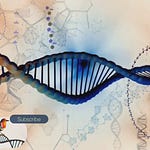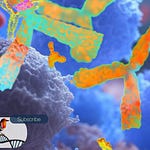Circular DNA and RNA molecules, unique nucleic acids with covalently closed loop structures, are transforming the landscape of molecular biology and biotechnology. Unlike linear nucleic acids, these circular forms, including plasmids, circular RNAs (circRNAs), and innovative synthetic constructs, possess remarkable stability and unique regulatory functions. Their resistance to degradation by exonucleases provides a significant advantage, facilitating their application in cutting-edge research, diagnostics, and therapeutic strategies.
In this podcast episode, we dive deep into the fascinating biochemistry behind circular DNA and RNA. We'll explore their diverse natural roles, from plasmids that confer advantageous traits in bacteria, to mitochondrial DNA essential for cellular energy production, and circRNAs that play intriguing roles in regulating gene expression. Additionally, we'll examine recent discoveries in how circRNAs can act as molecular sponges, sequestering microRNAs to finely tune genetic processes.
Beyond their natural occurrence, we also discuss advanced synthetic modifications scientists employ to engineer these molecules. Learn how researchers are harnessing circular nucleic acids for innovative gene editing approaches, developing next-generation vaccines, and enhancing gene therapies with improved stability and efficiency. We'll highlight groundbreaking examples and potential future applications that illustrate why circular nucleic acids represent a powerful frontier in biotechnology.
Join us in uncovering the exciting possibilities these distinctive nucleic acid structures offer, reshaping our approach to medicine, diagnostics, and biological research in unprecedented ways.













Share this post